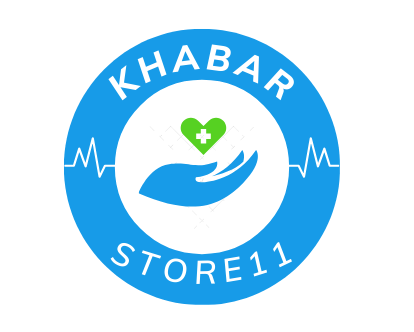How To Clear Blocked Nose Fast:-Difficulty breathing through the nose, also known as nasal obstruction, is a common issue that affects millions of people worldwide. It can range from mild congestion to severe blockage, making it hard for individuals to breathe normally through their nose

Causes of Difficulty Breathing Through the Nose:-
There are several reasons why someone may experience nasal obstruction. Here are the most common causes:
1. Nasal Congestion Due to Cold or Flu
One of the primary causes of nasal obstruction is congestion due to cold or flu. Infections cause the lining of the nasal passages to swell, leading to blockages. Viral infections like the common cold or flu often result in temporary nasal congestion.
2. Allergies
Allergic rhinitis is another common cause of difficulty breathing through the nose. Pollen, dust mites, pet dander, and other allergens can trigger an inflammatory response in the nasal passages. This leads to swelling and mucus buildup, causing a blocked nose.
3. Deviated Nasal Septum
A deviated septum occurs when the wall separating the two nostrils is not straight, leading to one nostril being more obstructed than the other. This condition may be congenital or the result of injury and can lead to chronic nasal obstruction.
4. Nasal Polyps
Nasal polyps are non-cancerous growths in the lining of the nasal passages or sinuses. They can grow large enough to obstruct nasal airflow, causing difficulty breathing. Polyps are usually associated with chronic sinus infections or inflammation.
5. Sinusitis
Sinusitis, or sinus infection, occurs when the sinuses become inflamed due to infection or allergies. The inflammation can cause swelling and block the nasal passages, leading to breathing difficulties.
6. Enlarged Adenoids
Adenoids are lymphoid tissues located at the back of the nasal cavity. When they become enlarged, especially in children, they can block the nasal airways, leading to mouth breathing and nasal congestion.
7. Foreign Objects
In children, nasal obstruction can sometimes be caused by foreign objects lodged in the nose. This is a medical emergency and requires immediate attention.
8. Pregnancy Rhinitis
Hormonal changes during pregnancy can cause the nasal passages to swell, a condition known as pregnancy rhinitis. This can lead to nasal congestion and difficulty breathing through the nose.
9. Dry Air
In some cases, excessively dry air can irritate the nasal passages, leading to swelling and congestion. This often happens in environments with low humidity or during the winter months.
Symptoms of Nasal Obstruction:-
People with nasal obstruction may experience a variety of symptoms depending on the cause. Common symptoms include:
- Difficulty breathing through the nose: The most obvious symptom, often leading to mouth breathing.
- Mucus buildup: A feeling of excessive mucus in the nasal passages, which can be clear or discolored.
- Sinus pressure: Pain or pressure in the face, especially around the eyes and forehead, often associated with sinusitis.
- Headaches: Frequent headaches caused by sinus pressure and nasal congestion.
- Snoring: Nasal obstruction can lead to snoring or sleep apnea, especially at night when lying down.
- Dry mouth: Mouth breathing due to nasal obstruction can result in a dry mouth, especially in the morning.
- Fatigue: Difficulty breathing through the nose can disrupt sleep patterns, leading to fatigue during the day.
How To Clear Blocked Nose Fast
Fortunately, several remedies can help alleviate nasal obstruction. These range from simple home remedies to medical treatments, depending on the severity of the condition.
1. Saline Nasal Spray
Saline sprays are one of the simplest ways to relieve nasal congestion. They help moisturize the nasal passages, thin out mucus, and reduce swelling. You can use a saline nasal spray several times a day for quick relief.
2. Steam Inhalation
Inhaling steam can help loosen mucus and clear the nasal passages. Adding essential oils like eucalyptus or peppermint to the water can enhance the effect. Simply boil water, place a towel over your head, and inhale the steam for 10–15 minutes.
3. Use a Humidifier
If dry air is causing nasal congestion, using a humidifier can help. A humidifier adds moisture to the air, reducing irritation in the nasal passages and making breathing easier.
4. Allergy Management
If allergies are the cause of your nasal obstruction, it’s essential to manage them properly. Avoid known allergens, use air purifiers, and consider over-the-counter antihistamines or nasal corticosteroids.
5. Nasal Strips
Nasal strips are adhesive strips that you place on the outside of your nose to help open the nasal passages. They can provide temporary relief from congestion, especially during sleep.
6. Decongestants
Over-the-counter decongestants can help reduce swelling in the nasal passages, providing short-term relief. However, they should not be used for more than a few days at a time, as prolonged use can cause rebound congestion.
7. Warm Compress
Applying a warm compress to the face can help relieve sinus pressure and reduce nasal congestion. The warmth helps increase blood circulation, reducing inflammation in the nasal passages.
8. Medical Treatments
- Nasal Polyps: If nasal polyps are the cause of the obstruction, a doctor may recommend medications like nasal corticosteroids or surgery to remove them.
- Deviated Septum: A deviated septum may require surgical correction (septoplasty) to improve airflow through the nose.
- Adenoidectomy: Enlarged adenoids that obstruct breathing, especially in children, may require surgical removal.
9. Stay Hydrated
Drinking plenty of water helps keep mucus thin and prevents it from clogging the nasal passages. Aim for at least 8 glasses of water per day.
10. Avoid Irritants
Avoid exposure to irritants like cigarette smoke, strong perfumes, and environmental pollutants, which can aggravate nasal congestion.
When to See a Doctor:-
While most cases of nasal obstruction can be managed with home remedies, some situations require medical intervention:
- Chronic nasal congestion lasting more than 10 days
- Severe pain or pressure in the sinuses or face
- Frequent nosebleeds
- Persistent mouth breathing or sleep apnea
- Symptoms of a serious infection, such as high fever, severe headache, or vision problems In such cases, consulting an ENT (ear, nose, and throat) specialist is recommended.
READ MORE- how to stop nosebleeds quickly
Conclusion:-
Difficulty breathing through the nose can be caused by a variety of factors, from simple allergies to more complex issues like nasal polyps or a deviated septum. By understanding the underlying cause and choosing the appropriate remedies, you can find relief and improve your overall quality of life. However, if symptoms persist or worsen, it’s essential to seek medical advice to address any underlying issues effectively.
